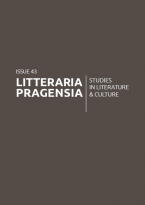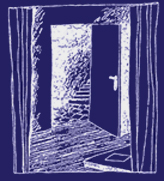
|
22.43 Towards a Lachrymology: Tears in Literature & Cultural HistoryEdited by: Timothy Webb Volume: 22 Issue: 43 July 2012 |
Contents
|
Timothy Webb
Tears: An Introduction
|
1 |
|
Timothy Webb
Tears: An Anthology
|
26 |
|
Henry Power
Homeric Tears and Eighteenth-Century Weepers
show abstract
This essay examines the tears shed by the heroes of the Iliad and the Odyssey, and identifies two central functions of weeping in the Homeric poems. First, showing characters in tears enables the poet to register the absolute difference between life and death - something we often see in the Iliad in particular. Second, tears are a gesture of remembrance and nostalgia - and this aspect comes to the fore in the Odyssey. I then turn to the eighteenth-century reception of Homer, and look at how Homeric tears fit into the cult of sensibility that was then emerging. Eighteenth-century readers tended to emphasize the tearfulness of the Homeric poems, their own proclivities making them particularly sensitive to an aspect of the poems not previously given much attention. |
46 |
|
Thomas Dixon
Enthusiasm Delineated: Weeping as a Religious Activity in Eighteenth-Century Britain
show abstract
Eighteenth-century Europe and its renowned cult of sensibility have a special place in the history of tears. This article revisits weeping in eighteenth-century Britain, seeking especially to recover the religious practices, texts, and ideas involved in the production and interpretation of tears. Some of the most prolific and public weeping of the period was produced by the Methodist revival, and especially the preaching of the "Weeping Prophet", George Whitefield. A different, more melancholy form of enthusiasm was the keynote of Henry Mackenzie's famously lachrymose novel The Man of Feeling (1771), reinterpreted here as a handbook of Christian sensibility and religious weeping. On both sides of the French Revolution debate in Britain in the 1790s, tears were shed, but were also denounced. The retrospective belief that tearful sensibilities had given rise to dangerous ideologies and bloody violence cast the practice of weeping in a new light. Suspicions of religious "enthusiasm" from earlier periods were now applied to revolutionary sympathisers in Britain, and commentators, including Helen Maria Williams, began to discuss the idea that it was un-English to weep. |
59 |
|
Martin Procházka
From Crisis to Cosmos and Beyond: Tears in Byron, Novalis and Mácha
show abstract
Discussing the uses of tears as literary themes and poetic figures, this article focuses on three poets: Byron, Novalis and Karel Hynek Mácha, a leading representative of Czech Romanticism. The literary links between the former two authors were established in Mácha's reading and writings: his chef-d'œuvre, a lyrical-epic tale May (1836) owes much to Byron's epic tales and the Third Canto of Childe Harold's Pilgrimage (1816), while his philosophical fragments in prose were influenced by Novalis' works: his poetry (Hymns to the Night, 1798) and novel Henry von Ofterdingen (1802). The article compares the political, spiritual and aesthetic implications of tears in the above works, foregrounding diverse connections between representations of the universe and the intensity of human emotions. Using Georges Bataille's notions of "restrictive" and "general economy," these connections are interpreted in the framework of the general "play of energy" and its analogical patterns represented both on a cosmic and human scale. |
82 |
|
George Pattison
“Water the Earth”: Dostoevsky on Tears
show abstract
As opposed to modern Western culture, in which tears are seen as unmanly, Dostoevsky inherits not only a cultural but also a religious tradition that gives positive significance to tears in the spiritual life, as in the teachings of Isaac the Syrian, which Dostoevsky knew. According to this teaching, tears manifest a dispossession of the ego and an opening of the self to God. This is illustrated by reference to the story of Alyosha's religious experience, recounted in Chapter IV of Book VII of The Brothers Karamazov, which also exemplifies the religious teachings of the Elder Zosima, Alyosha's starets. The potentially morbid aspect of a religious culture of tears is discussed with reference to the abject figure Marya Lebyatkina in The Possessed, whilst its ambiguity is also seen in the too easily flowing tears of Stepan Trofimovich Verkohovensky, and in the tears of the convict Fedka, both also in The Possessed. Yet in all these cases Dostoevsky uses these characters' tears both to explore their personalities and to reveal the truth of their God-relationship. |
95 |
|
Helen Small
“Letting Oneself Go”: John Stuart Mill and Helmuth Plessner on Tears
show abstract
This essay examines the meaning and value attached to tears in the writings of John Stuart Mill and Helmuth Plessner. Mill's recollection in his Autobiography of the moment in 1826 when he was moved to tears reading the Mémoires of Marmontel has became a famous statement of the limitations of a utilitarian education (and by extension any education) which cultivates the rational analytic powers of mind at the expense of developing the emotions. Helmuth Plessner's work of "philosophical anthropology" Laughing and Crying (1941; first translated into English in 1970) remains less well known outside Germany, though it has attracted wider and increasing attention in recent years. Like Mill, but without reference to him, Plessner pursues an account of crying as a distinctively human expression of emotion that signals to us the limits of our capacity to reason adequately about our own human condition. This essay pursues the exact nature of that claim in both instances, and the further claims it yields about the nature of emotion and its relation to knowledge, as viewed from the shifting borderlines between philosophy and psychology. |
112 |
|
Louise Joy
“Snivelling Like a Kid”: Edith Nesbit and the Child’s Tears
show abstract
Parenting manuals of the late Victorian and Edwardian period insist on the necessity for children to refrain from crying; children's tears threaten the happy childhoods which it is the duty of parents to give. While parenting manuals rarely pause to consider the implications for the child of being compelled to stop - or at the very least conceal - its tears, there is a form of writing in the period which does consider the question from the child's point of view: the children's novel. By analysing how Edith Nesbit's The Railway Children casts the child as an active agent in the gift exchange of a happy childhood, one who is not merely conscious of it but furthermore in control of it, this essay aims to expose what the parenting manuals of this period conceal: the costs involved when the child gives up her right to cry. Nesbit invites the reader to enter into a conspiracy with her child protagonists even as we place ourselves in the hands of the narrator, creating a kinship between child character, narrator and reader founded on a shared capacity for insight into the child's suffering which the adult characters lack. |
128 |
|
Review of
Michal Peprník
Rané romány Jamese Fenimora Coopera: Topologie počátků amerického románu (The Early Novels of James Fenimore Cooper: A Topology of the Origins of the American Novel)
Olomouc: Univerzita Palackého, 2011. 179 pp.
→ Anna Světlíková, Places of Plurality: Michal Peprník on the Early Novels of J.F. Cooper |
143 |
|
Review of
Tara Powell
The Intellectual in Twentieth-Century Southern Literature
Baton
Rouge: Louisiana University Press, 2012. 266 pp.
→ Dagmar Pegues, "Edumacation" and "Interleckchuls": The Life of the Southern Mind at the Threshold of the Twenty-First Century |
146 |
|
Review of
Dagmar Pegues
,
Tereza Kynčlová
Cesta Amerikou: Antologie povídek regionálních spisovatelek (Across America: An Anthology of Stories by American Women Regionalists)
Brno: Host, 2011. 239 pp.
→ Alice Sukdolová, Women Who Found Their Voice: A Search for American Regional Identities |
153 |
|
Review of
Alena Smiešková
Mýtus. Realita. Rozprávanie. Prípad Philip Roth (Myth, Reality, Narrative: The Case of Philip Roth)
Nitra: Univerzita Konštantína filozofa, Filozofická fakulta, 2011.
144 pp.
→ Hana Ulmanová, David Lukeš, Reading Roth And Others |
157 |


